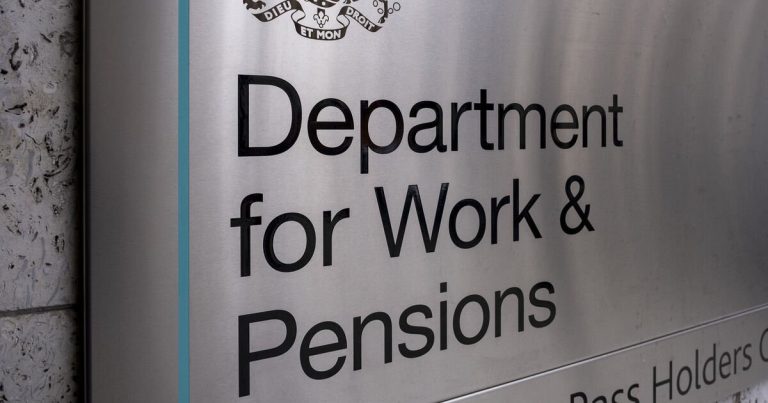
Chair Nora Vargas pledged during her State of the County address Wednesday that the Board of Supervisors would remain focused on homelessness, housing and health care this year.
“As your chairwoman, I’ve prioritized building a more equitable society for everyone in San Diego County,” Vargas said. “I want to make sure that we make our government work for all, not just for some, fostering a sustainable future, and ensuring everyone has access to the health care and resources that they need.”
County, government and community leaders, as well as college students, filled nearly every seat in the Performing Arts Center at Vargas’ alma mater, Southwestern College, in Chula Vista.
Much of Vargas’ address centered on recent county achievements. “We’re getting stuff done in the county of San Diego for the people of the county,” she said.
Vargas touted some of the county’s recently approved programs that tackle homelessness, boost housing for the county’s most vulnerable and expand health care resources. And she discussed plans to improve air quality, address immigration funding shortfalls and expand transportation infrastructure.

Board of Supervisors Chair Nora Vargas delivers her State of the County address at Southwestern College on Wednesday in Chula Vista.
(Meg McLaughlin / The San Diego Union-Tribune)
She also acknowledged that the unprecedented floods that devastated parts of San Diego County — and prompted her to postpone the State of the County last month — exposed the inequities facing some of the region’s neglected communities.
Keeping people housed is imperative to preventing homelessness, she said, stressing the need to help vulnerable groups, such as seniors and veterans.
“I believe housing is a fundamental human right, and a cornerstone of dignity, stability and opportunity,” Vargas said. “We are committed to creating lasting solutions and building a community where everyone has a safe and secure place to call home near transit and job centers.”
The county has invested $5 million in a rental subsidy program for seniors and an additional $10 million on a direct one-time payment program to support families and older adults. And the county has invested over $45 million toward affordable housing projects.
Last year, 750 units started construction, 500 units were completed and more than 1,100 homes were built in San Diego County.
Vargas said ensuring everyone has access to health care is also vital, from behavioral health to substance use disorders.
She mentioned the various state initiatives the county is working to implement, such as the new CARE Court that aims to get people with schizophrenia and related disorders court-ordered mental health treatment and plans in the works to expand the rules for involuntary mental health holds.
She also reiterated the county’s commitment to improving workforce development, noting that the county needs to revisit its funding formula for small-business grants and explore more inclusive policies for microenterprises.
And as the county works to invest in future generations, Vargas announced a professional development program for youths in the region. The Youth Supervisors’ Academy aims to establish a youth talent pipeline for the county, she said. The first cohort, which graduated in January, helped draft board letters and learned about how county government works.
“I’ve already learned so much from the youth I’ve worked with as part of this project,” Vargas said. “We have so much to learn from each other.”
Vargas praised the federal and state government’s approval of the county’s request for disaster assistance, which she says will help county residents and businesses rebuild vital infrastructure damaged by the storm.
“Now, make no mistake, we still have a lot of work to do to help people regain their footing and rebuild their lives, but I’m really proud of how we’ve come together as a community,” Vargas said. “We are living in extraordinary times. The difficulty, need and devastation that our community is facing is all too real.”
Those storms affect communities of color and low-income communities the worst, she said, pointing to the need to support community infrastructure projects to address climate-related emergencies.
“My primary goal is to enhance our local capacity to adapt and build resilience, starting with a pilot project in my district,” Vargas said. “The success of this work will set a precedent for the entire county, ensuring that the benefits of our climate adaptation strategies reach all communities. That means that everyone has the ability to recover equally from climate change catastrophes.”

Board of Supervisors Chair Nora Vargas delivers her State of the County address at Southwestern College on Wednesday in Chula Vista.
(Meg McLaughlin / The San Diego Union-Tribune)
Some of those goals include addressing air and water pollution across the region.
The county has begun to tackle this by partnering with the San Diego Air Pollution Control District to deploy air sensors in the Tijuana River Valley to gather data. Vargas said the county is working to deploy more sensors to expand coverage farther into the Tijuana River, as well as San Ysidro and Imperial Beach.
Vargas announced an initiative with the air quality district to further reduce emissions. The Electric Landscape Equipment Assistance Funding program, or E-LEAF, will assist small landscaping businesses in replacing gasoline-powered lawn and garden equipment with zero emission alternatives.
She also detailed an initiative to transform the Tijuana River Valley Regional Park into a binational landmark and world-class sports complex, with a community park and green space for South Bay residents.
“Creating these innovative spaces will be a crucial step toward addressing the underdevelopment of historically neglected communities and also strengthening our bi-national community,” Vargas said. “It’s time that everyone has access to these kinds of natural resources that strengthen a sense of community and allow people to thrive.”







